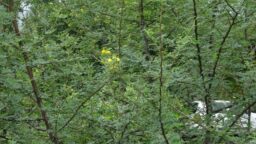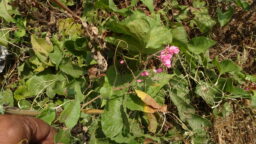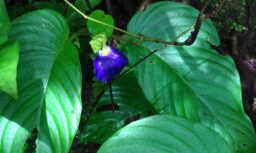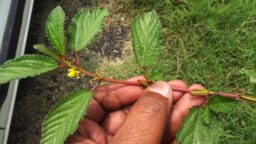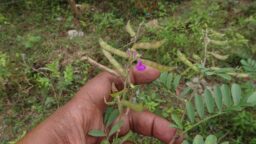Common Name: Babool. Tamil Name: Karuveli
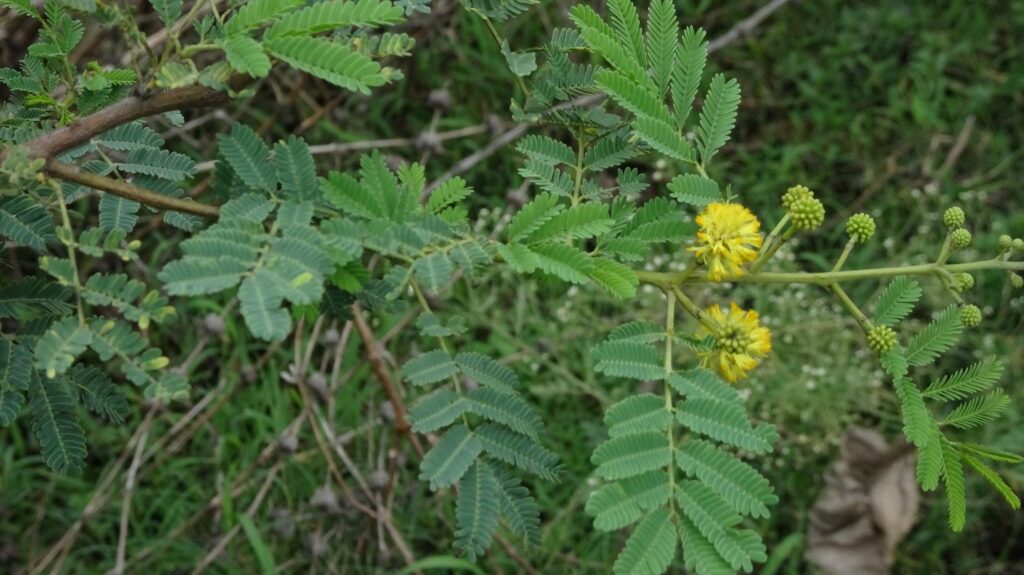
Babool is a native tree to our region, it grows to a height of about 10 meters. The tree is much branched and forms a round crown, the branches hang down bearing attractive yellow ball shaped flowers. The trunk is black in color, rough in texture, and have vertical fissures. The leaf arrangement is alternate and bipinnate. Each leaf has about 5-7 pinna; each pinna consists of 17-18 pairs of sessile leaflets arranged in an opposite manner. There is a leaf gland at the position of the first lowest pinna pair. The leaflets are oblong in shape with base and apex rather rounded. The leaflet measure around 5-7 mm in length. The plant has stipular brown colored paired spines. The lower portion of the plant bears large paired spines which measure around 3.7 cm and are whitish in color. The inflorescence is in the form of a axillary cymes. The flower heads are yellow in color, globular in shape and consists of several flowers. The fruit is in the form of a strap-like flat pod, the pod is prominently constricted between seeds. The pod measure around 15 cm in length. The pod contains about 10 seeds which are black in color. Babool wood is considered suitable for making agricultural tools, the leaves are used as fodder, other uses include extraction of tannins gums and as fuel. The tree grows very fast and can tolerate very dry conditions. It is often planted in farm lands-as it can fix nitrogen through root nodules. The tree is used to rehabilitate arid areas. This tree can be planted near river, lake and near water bodies as it can withstand partially submerged conditions. It is a much preferred nesting tree for birds. The nectar rich flowers attract a lot of insects and butterflies. It is the larval host plant for as many as 7 butterflies.

